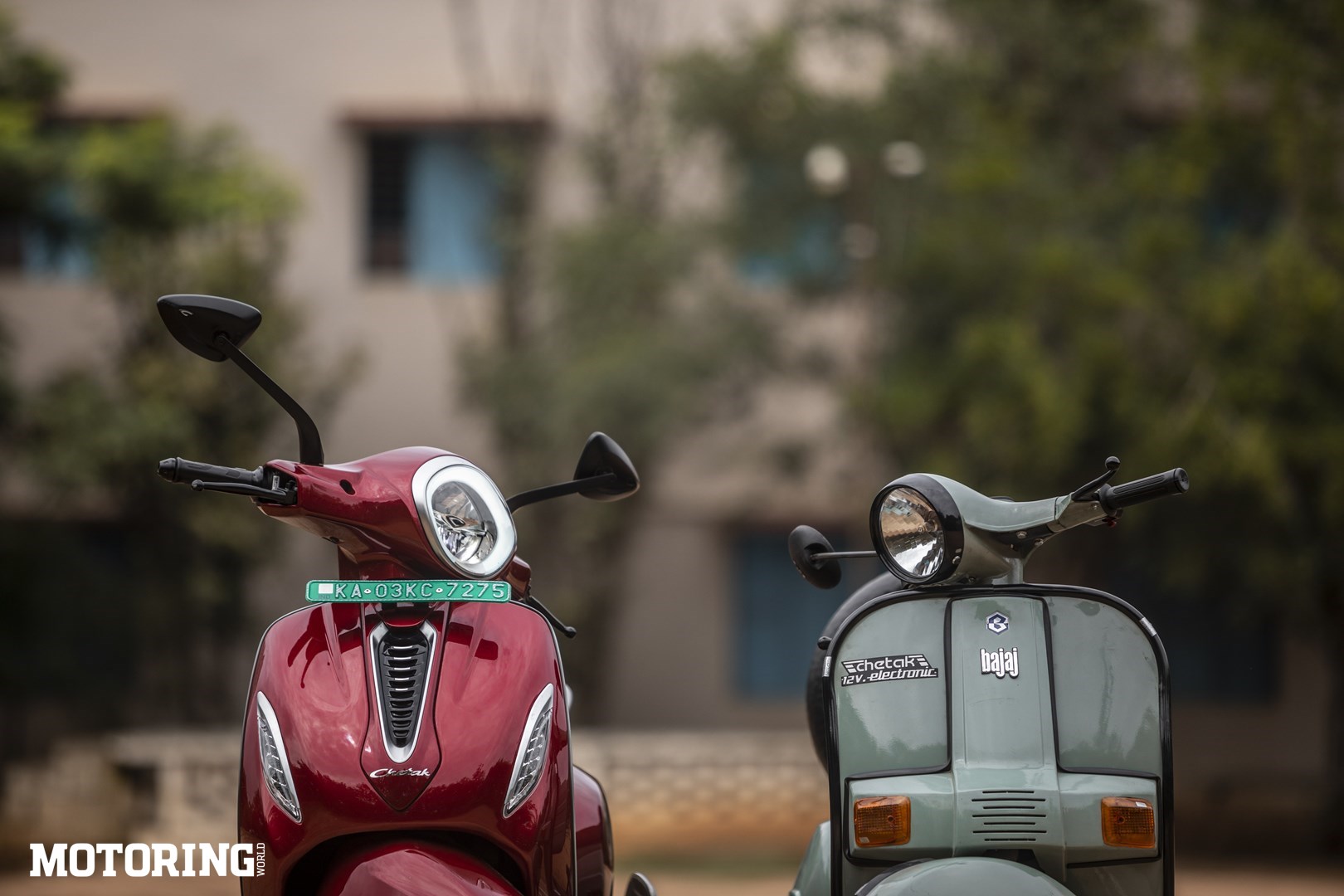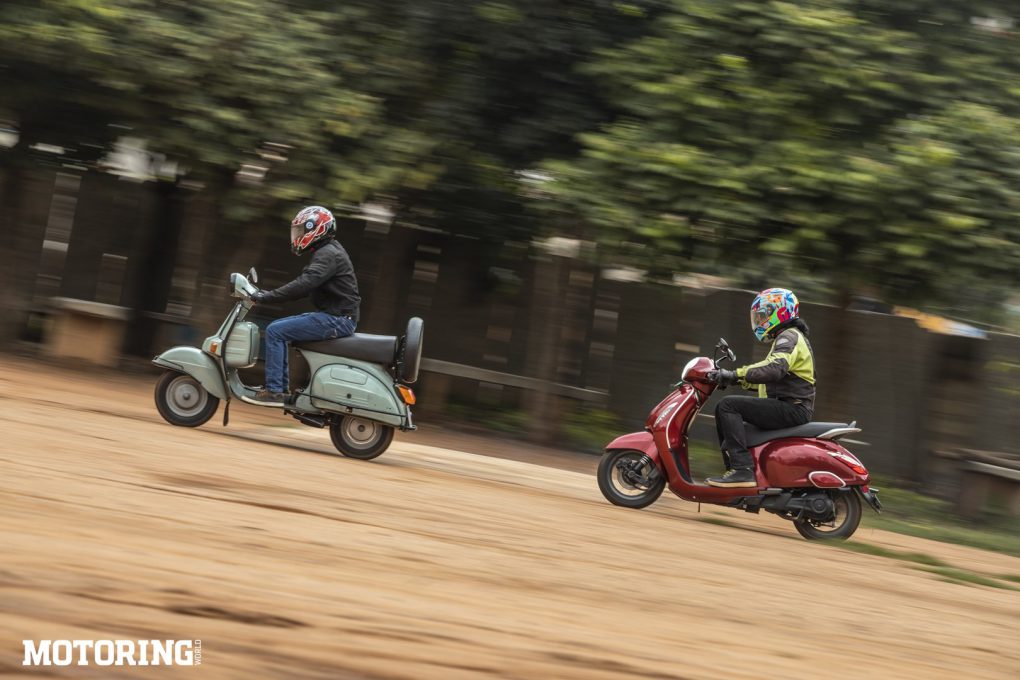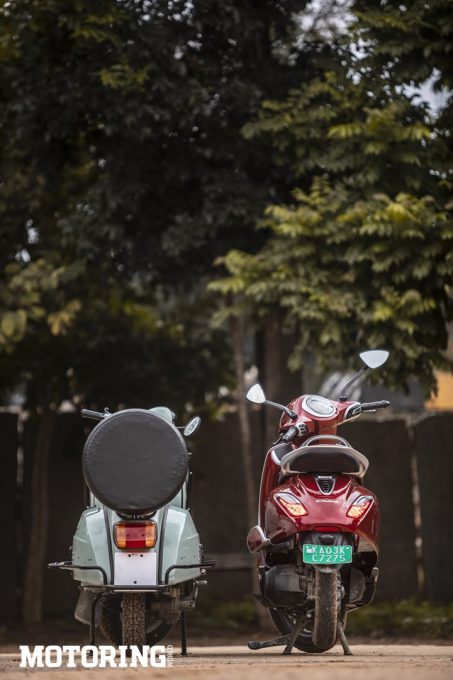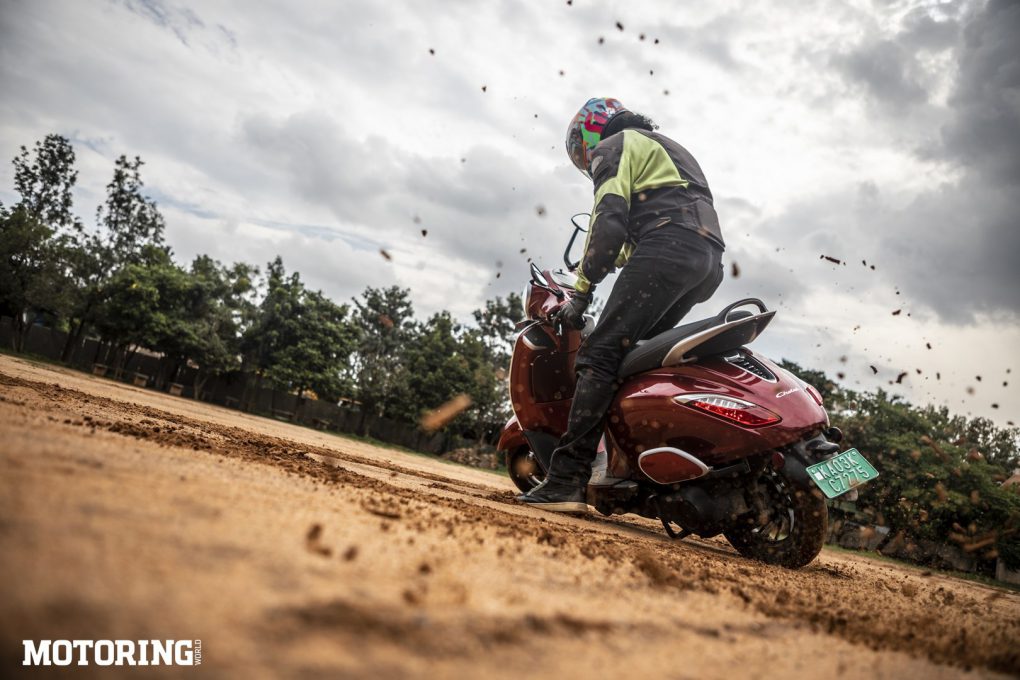Why are horses always pessimistic? Because they are neigh sayers. Now, if your palm is finally off your face, let’s get on with the story at hand. The Bajaj Chetak needs no introduction. As a kid, I was once knocked down by one when I ran onto a road. A few years later, I rode one into a ditch full of thorny branches. There was also that time when I wheelied one from a standstill, only to have the headlamp deliver a solid uppercut to my shocked face. Many more years later, I bought one with a sidecar and have since ridden it only once. Nonetheless, the Chetak always came visiting from time to time, like that one well-meaning relative we all used to have. And nothing’s more well-meaning these days than an electric vehicle, is there?
Today, the Chetak 12V Electronic is the boomer to the Chetak electric’s millennial. Of course, like any self-respecting boomer, the old two-stroke doesn’t know what the word means. The one you see here is a 1990 model that belongs to Bhuvan Reddy and was restored by Gokul M. Total cost of restoration? Rs 15,000. How’s that for value for money?! Meanwhile, the Chetak electric, as I’ve told everyone within earshot so far, is my favourite new scooter — not just electric, but outright. But does it even have a chance of replicating what its once-ubiquitous ancestor achieved?
At one point in its life, the old Chetak had a waiting period of up to ten years (!), which roughly feels the same as the new one’s charging time. Unless it’s night and you’re asleep, which is the best thing to do, of course. The fact that the new scooter isn’t labelled, badged or embossed with Bajaj branding shows just how much sway the Chetak name holds even 15 years after the last four-stroke Chetak was sold. Remember that one? I certainly don’t. Conditioned by the Chetak’s smoking exhaust since 1972, I suppose people thought the fourstroke was a normal Chetak about to seize. And so the Chetak followed the dodo out of existence.
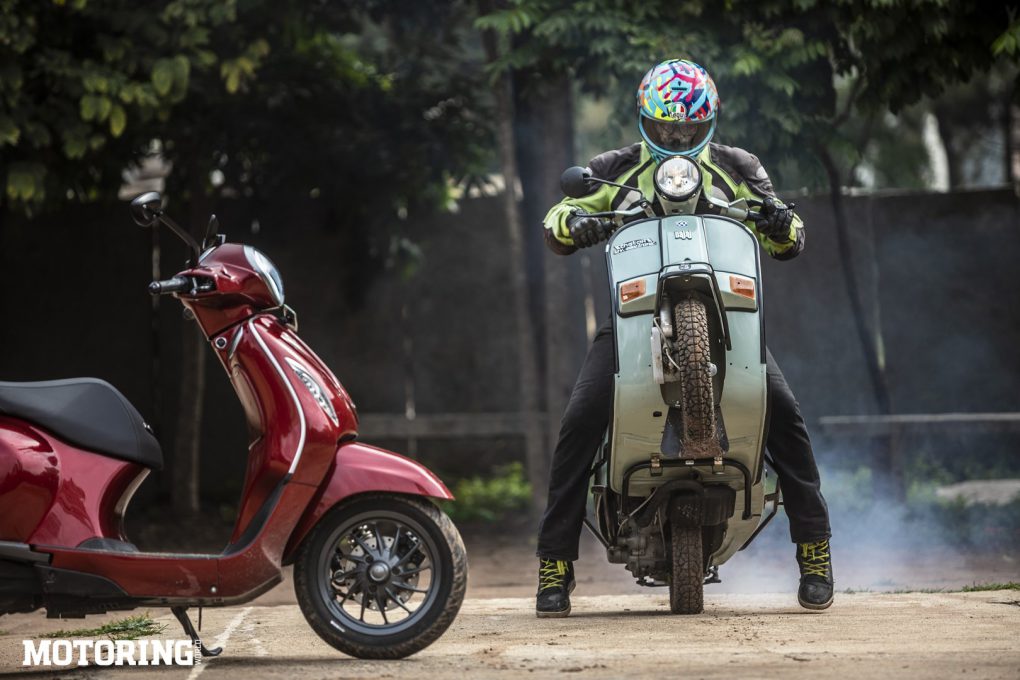
Nonetheless, faced with this fresh example, it felt like the Chetak hasn’t really gone anywhere. That colour, whatever it is, is so Chetak; I don’t think there is a shade that better exemplifies modest anonymity. And that’s on a justrestored scooter! If you ever really notice an old Chetak, you’ll realise its slogan — ‘Has it always been there?’ Even Mumbai, the mighty cesspool of progress, still has puttering Chetaks going about their business, typically invisible. In other parts of the country, particularly up north, people still swear by it. Time seems to go slower for workhorses, doesn’t it?
However, when I forced myself to pay it more than a moment of unconscious attention, I realised all over again what a clever design it was. Originally based on the Vespa Sprint, the Chetak became an eventual and unlikely combination of Italian style and Indian practicality.
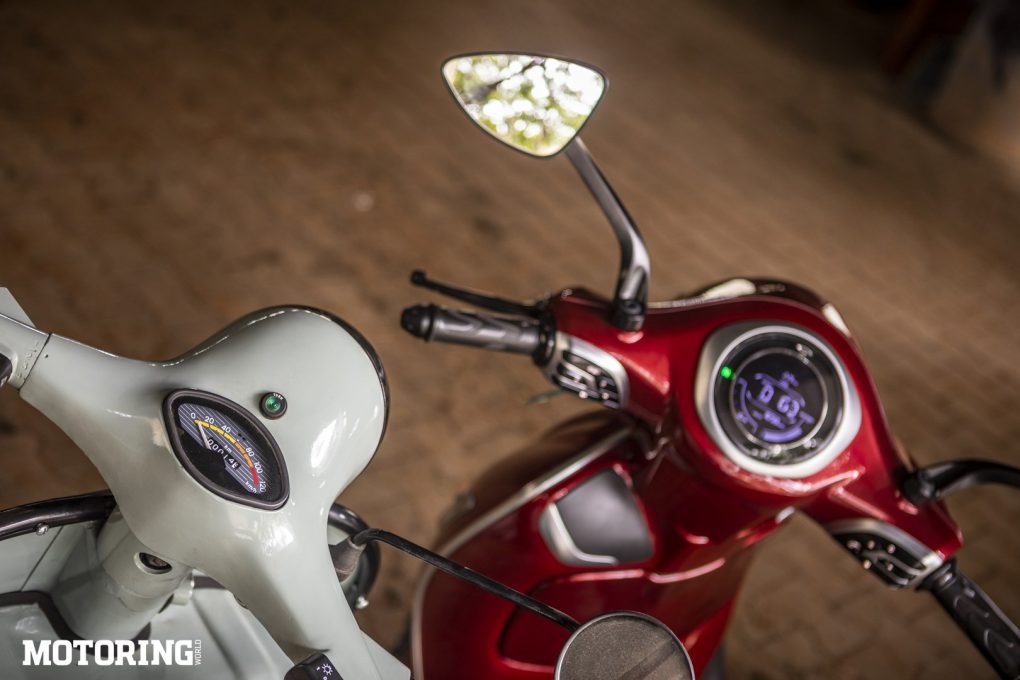
The old Chetak is all middle-class handsomeness, while the new one is sophisticated electric glamour. Seriously, I don’t think I’ll ever get over the new Chetak’s switchgear which is better than those in most cars. Any more style, and the Chetak electric would be banned everywhere except Milan and Paris. And that’s despite that chrome necktie it wears.
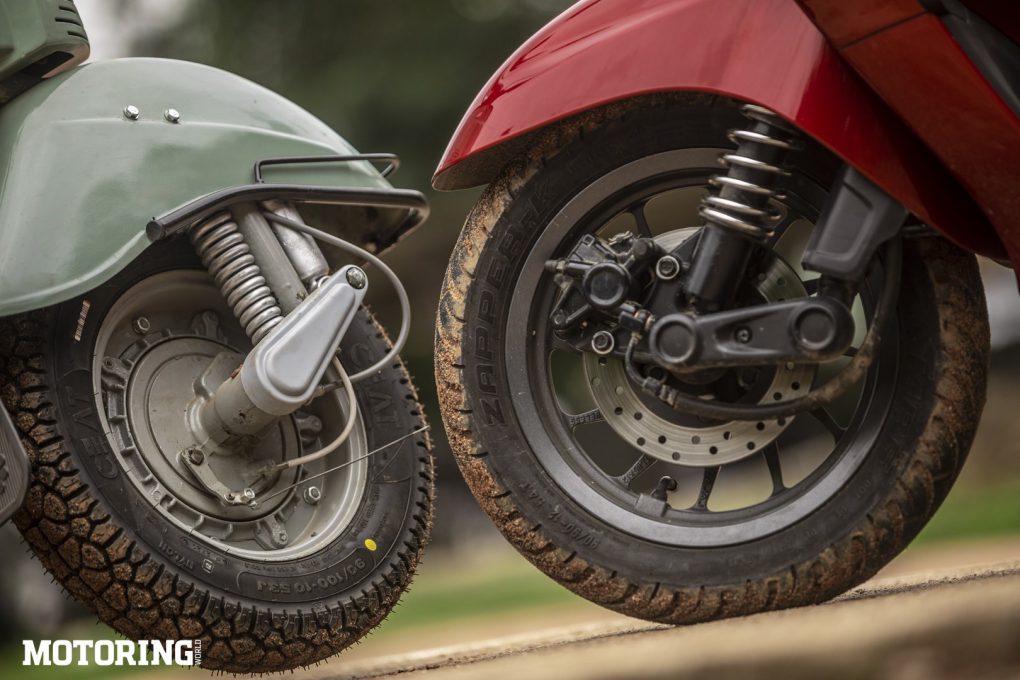
The Chetaks, new and old, share the same Vespa-ish proportions that are an inextricable part of the name’s heritage. They also share the single-sided front suspension, and the clean wheels on one side, though the sides are reversed. Of course, the old Chetak has never heard of the new one’s LED lighting and electric propulsion. And the electric probably wants nothing to do with its noisy, smoky predecessor. However, they also share an intangible dignity because of the thoughtful touches they possess, and that’s what makes the new one a true Chetak.
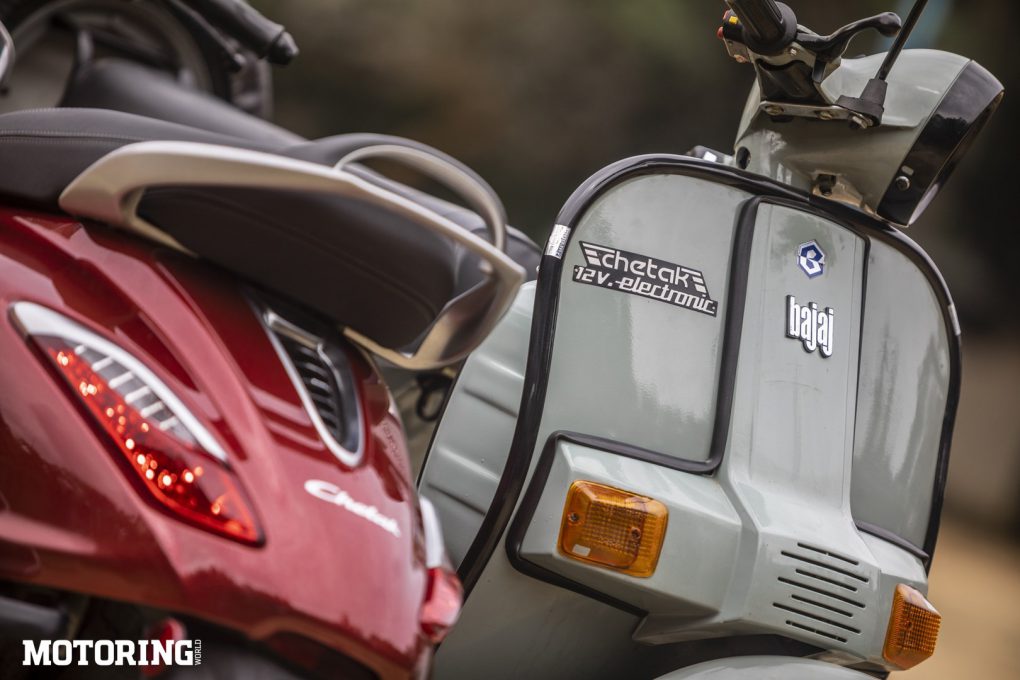
Keyless lock? You’ve got it. Classy DRL? Yup. Smooth operation? Cosseting ride quality? Fun handling? Yes, yes, and yes. And like those burly uncles of yore, who started their commutes with wheelies off the old Chetak’s main stand, the new Chetak is comfortable for big-made guys, too. However, millennials who wish to replicate that morning ritual with the new Chetak will be disappointed — the throttle switches off when the stand is down. I cannot describe how tragic this was. And there was only one thing that got me over it — tilting the old one on its right side, and prodding the kick starter to produce a sound that generations of Indian have grown up to.
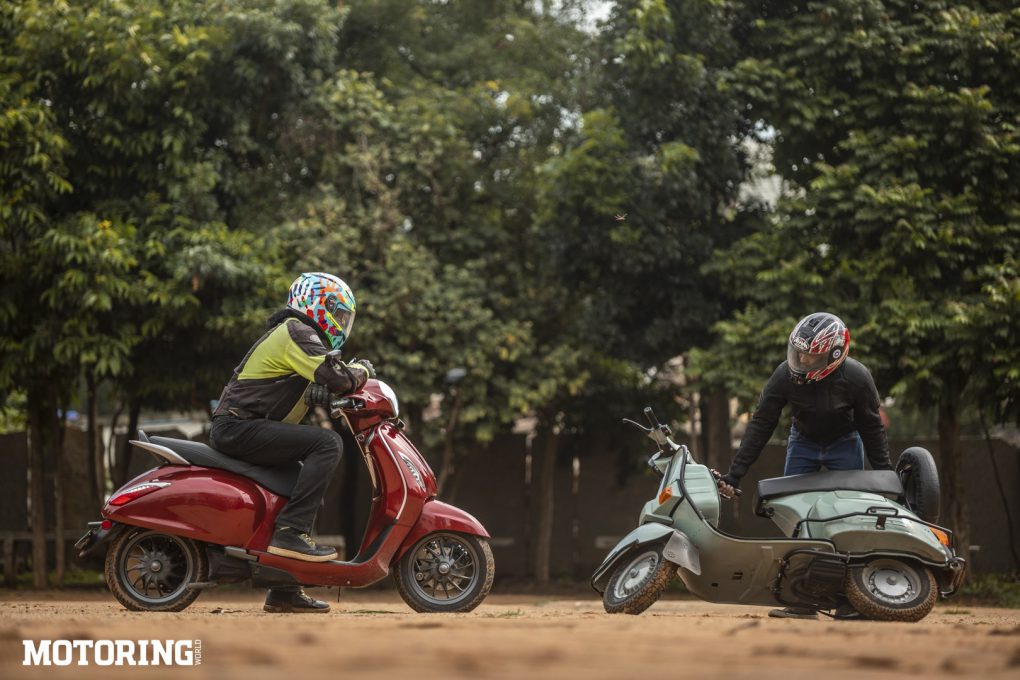
Riding the old Chetak made me wonder if its riders developed unusually flexible left wrists, thanks to its 4-speed twist-shifter. What I remembered very well was the tock of the gearbox issued with every shift, a recognisable sound that’s part of two-wheeled history. Its 145cc motor’s 7.5 bhp may have had 154 kg to haul around, but that weight was carried very low and to the back, so wheelies were ridiculously easy. Also, two-stroke power going through small-diameter wheels was always quick, and I bet the old one could outrun its new descendant given enough space.
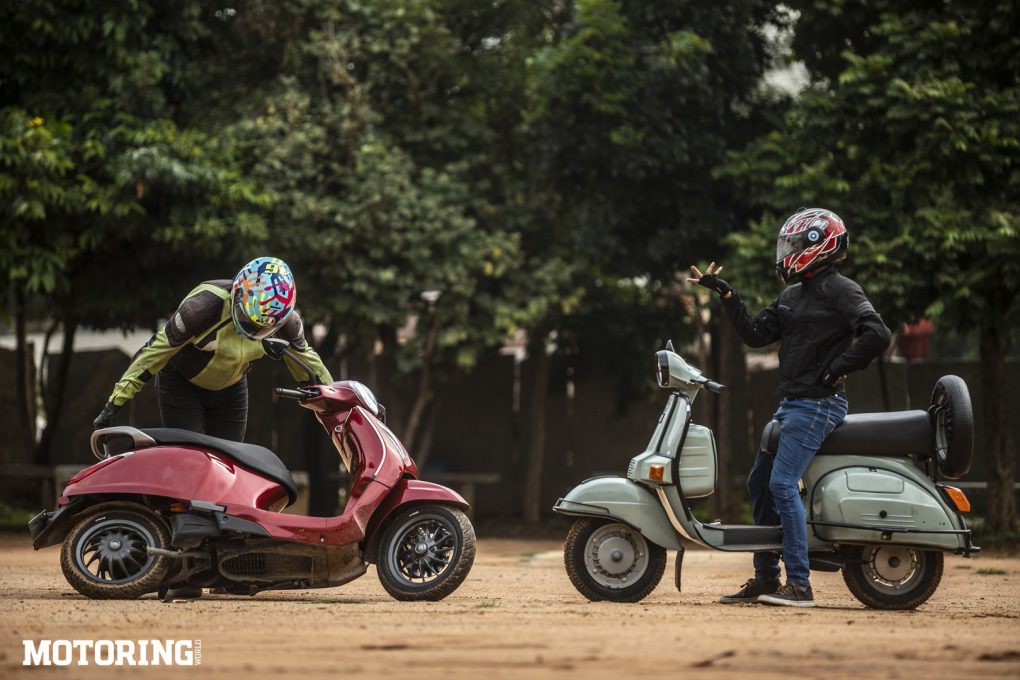
The old Chetak’s handling, though, could only be described as a two-way street of politeness. It expected me to be considerate, and would return the favour as long as I remained that way. Chetaks were notorious for pulling to one side under hard braking, and as experience has taught me, thorny ditches lay that way. The Chetak electric, on the other hand, tracked straight, true, and fun. Modern tyres allowed stupid degrees of lean angle, and that also showed the new Chetak’s inherent balance. The new throttle didn’t rely on the thrill of internal combustion but cohesiveness from the whole package. I suppose I could get used to it on occasion.
I’ve never had access to reliable fuel-consumption numbers for the old Chetak, only neighbourhood uncles who tried to outdo each other behind each others’ backs. The highest brag recorded was 55-60 kpl; it was never a single number, always two. Even if we take a more reasonable 45-50 kpl, the Chetak’s 6.5-litre fuel tank was good for 292.5-325 km. The new one, of course, will require at least three full charges to go those distances. And there’s no 2T smoke to make up for the shortcomings, either.
The Chetak was so convenient, it was the world’s first app. And it was way more fun than blinding yourself with a smartphone display, too. That’s why I cannot tell you enough how much I appreciate the fact that the new one doesn’t come with the screen that other electric scooters do. The new Chetak also carries forward that tradition of convenience, along with the hope of an eco-friendly future. Well, as much convenience as an electric scooter can provide with the current level of technology.
The old Chetak was not made to deal with today’s world, but it still can. It was almost designed to be invisible, and the new one is anything but. There are similarities, even if they are unrecognisable at first sight. And yet, they are nothing like each other. Sounds familiar? Well, it should be, coming from a name that put this country on the road to now and the future. Look at these two, and see how India itself has changed.





